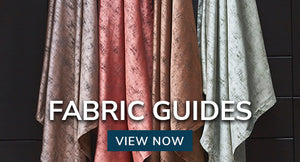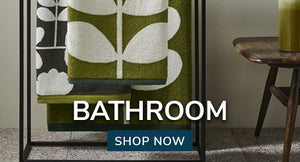A guide to all the ways you can arrange cushions on beds and sofas
Cushions are so versatile and useful for decorating. These accessories not only add colour and create a cohesion for your colour scheme, they add texture and interest to a room with their variety of fabrics and shapes. Best of all, they're inexpensive, so you can change the ambience of a room's décor for very little cost, just by changing the cushions. You don't even have to change them all to create a whole new look, particularly if you want a more subtle look or bolder one. Changing half of the colours of the cushions may be all you need to do.
The rules below apply to both bedding and sofas, with a few additional bits of information for the bedroom later in the guide.
Choosing Cushions for the Perfect Room Design
The key to creating any great décor is to start simple and work from there. Stand in the middle of the room so you have a 360 degree view just by turning in a circle. Slowly, pan the entire room to get a feeling of what is missing. Does the room lack colour, a theme, warmth or is it just blah, lacking interest? Cushions can help you create all those things, but first you have to decide exactly what you want from your accessories.
Even though this is focusing on using cushions on the sofa or bed, you can use cushions on every chair in your room. They don't have to match the bedding or sofa, but they do have to use the same palette. Even if the patterns on the cushions don't match, the colours in the patterns should. Think 'grouping' when adding cushions to chairs and sofas. In fact, cushions can create a cohesiveness to bring furnishings together. If you've inherited a favourite childhood chair from Grandma's house you want to display, but it doesn't go with the rest of the room, using cushions can help blend it with the others.
Is More Colour the Goal?
While a plain white room may look clean and fresh, it also looks sterile, so adding colour is imperative. Using cushions and other accessories can do the trick. If you want to attain a more sophisticated appearance, warm up a room or add a bold dash of colour, cushions can do the trick. Best of all, unlike the sofa, you aren't committed to this look for a long time, since cushions are inexpensive enough to use a few times and then pack away for the future, when you want to change to a new look.
Make a Larger Couch Cosy or Small Couch More Expansive
The colours you choose and the way you arrange those colours on a sofa, makes the difference in how you perceive the size of the sofa. If you choose bold contrasting colours for the cushions, it makes a larger couch look smaller and more cosy. A cushion matching the sofa or ones that are more monochromatic, create a more expansive appearance.
Size Counts
The size of the cushions you use will vary by the size of the sofa or the size of the bed. Smaller sofas and chairs may be overwhelmed if the cushions are too large. If you only use small cushions on larger couches, it will look out of place and out of balance. That doesn't mean you can't add a few to complete a decorating scheme. Just make sure your base uses larger cushions. For bed size suggestions, see below.
Creating a Base
Whether you choose to match the couch or add loads of colour, the first cushions on the end are extremely important. These should be the largest of the grouping. By doing this, you're creating a more inviting area and one that gives an air of stability and comfort. You need a really large sofa to use an over-sized cushion, but it will give a comfy feeling to the room. Again, while one or two small accent cushions are okay for larger sofas, if all the cushions are small, particularly the base, they look out of place. It's even worse to use too large of cushions on a small sofa. It can create a cluttered appearance and limit the usable area, while making the person sitting on the sofa far less comfortable.
Symmetrical or Asymmetrical
You can choose to use an even number of cushions for a more formal appearance and symmetrical look or go with an odd number for a more relaxed look. If you want a relaxed look, but your heart yearns for balance, go with a large cushion on one side and two medium sized cushions on the other. Another option is to lay two or three on each side with one smaller one in the centre of the two groupings.
Patterns and Solids
There are always rules of thumb when it comes to decorating, quick fixes that normally work well. One of these is to use a solid cushion next to a patterned one when they're side by side or at least make them different, such as a tiny pattern next to a large one. As long as the patterns have common colours, it's not a problem. Stripes are simple patterns that go well with other designs. Just as with clothing vertical stripes are slimming and horizontal ones look more expansive. When going with bolder accent colours, make sure your patterns have neutral tones, such as white and beige, in them to give the eyes a rest.
Number of Cushions
Again, the size of the sofa makes a difference. For larger sofas, five cushions might be just what you need, but for a small one or a love seat, three might be the limit or two. A chair normally should have only one. Again, the size of the cushions make a difference, so going with your instinct is always best. The more cushions you have, the more comfortable the sofa may look, but too many will prevent anyone from sitting on it without being overwhelmed with cushions. Consider usefulness when decorating.
Embellishments, Textures and Shapes of Cushions for Your Arrangement
Varying cushion sizes, textures and shapes add interest. Texture adds a tactile dimension, while colour pleases the eye. If you have a cushion with an interesting shape, embellishment or texture, often the place of honour, such as the middle in a three or five pillow grouping, is the place to put it. Varying texture can also be as simple as using a nubby surface for one or two cushions and a smooth surface for the others. This subtle type of texturing doesn't require placing the cushion in the centre.
Bedding and Cushions
Your bedroom and bed should be as inviting as the other rooms in your home and decorating with cushions can add to that ambience. There are two important factors, the size of the headboard and size of the bed, which vary when choosing accent cushions and pillows for the bedroom. Most arrangements include pillow cases that match the quilt or duvet. These are normally put next to the headboard.
Bed-size Plays a Role
The larger the bed size and headboard, the more shams, pillows and accent cushions you can use without looking out of place. Rule of thumb is to use a King pillow with a sham large enough to fit across the entire back of bed and two standard pillows with a one or two accent cushions on a single bed. For full beds, go with a Euro sham. Queen size beds could accommodate three queen shams, two to three queen pillows and few smaller cushions in front. Create a grouping of three. Use the same combination for a kingsize bed, except use king pillows. A large bolster cushion across the front is one option for decorating this arrangement or several smaller cushions in an asymmetrical arrangement.
Use Your Regular Pillows as the Backing
You can stack your bed pillows against the headboard with simple white pillow cases and let the accent cushions do all the decorating work. Arrange these as you would on a sofa, but in this case stick with the centre of the bed, allowing the cushions to overlap.
There are plenty of options when it comes to arranging cushions on beds and sofas, experiment until you find the combination that suits the size and style of your furniture the best.



























































